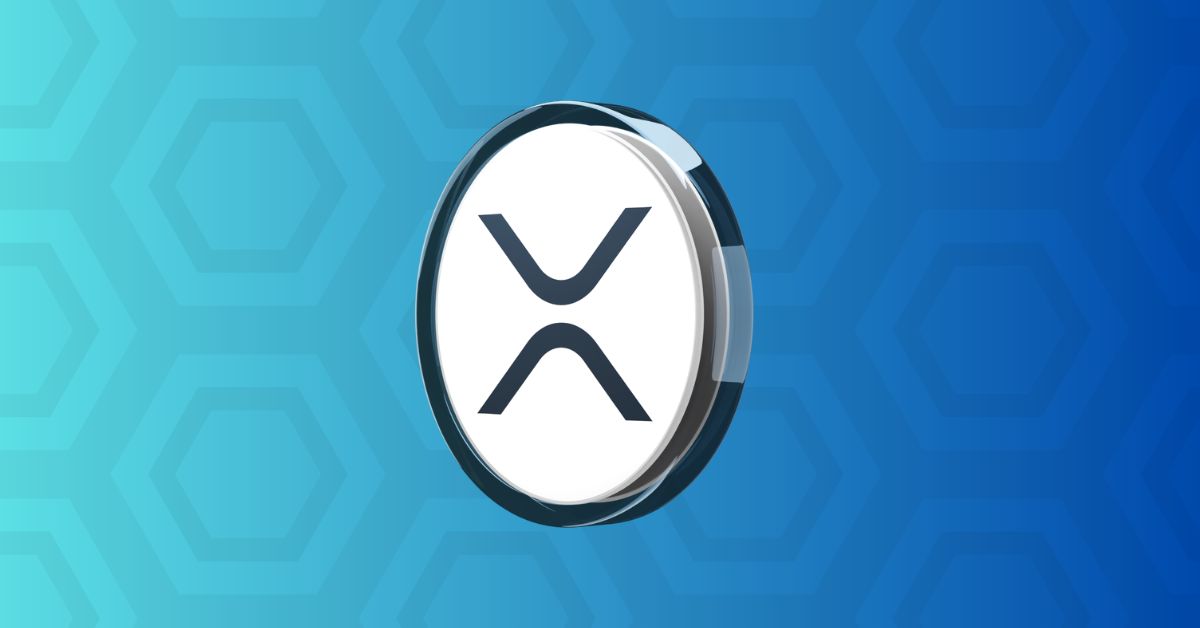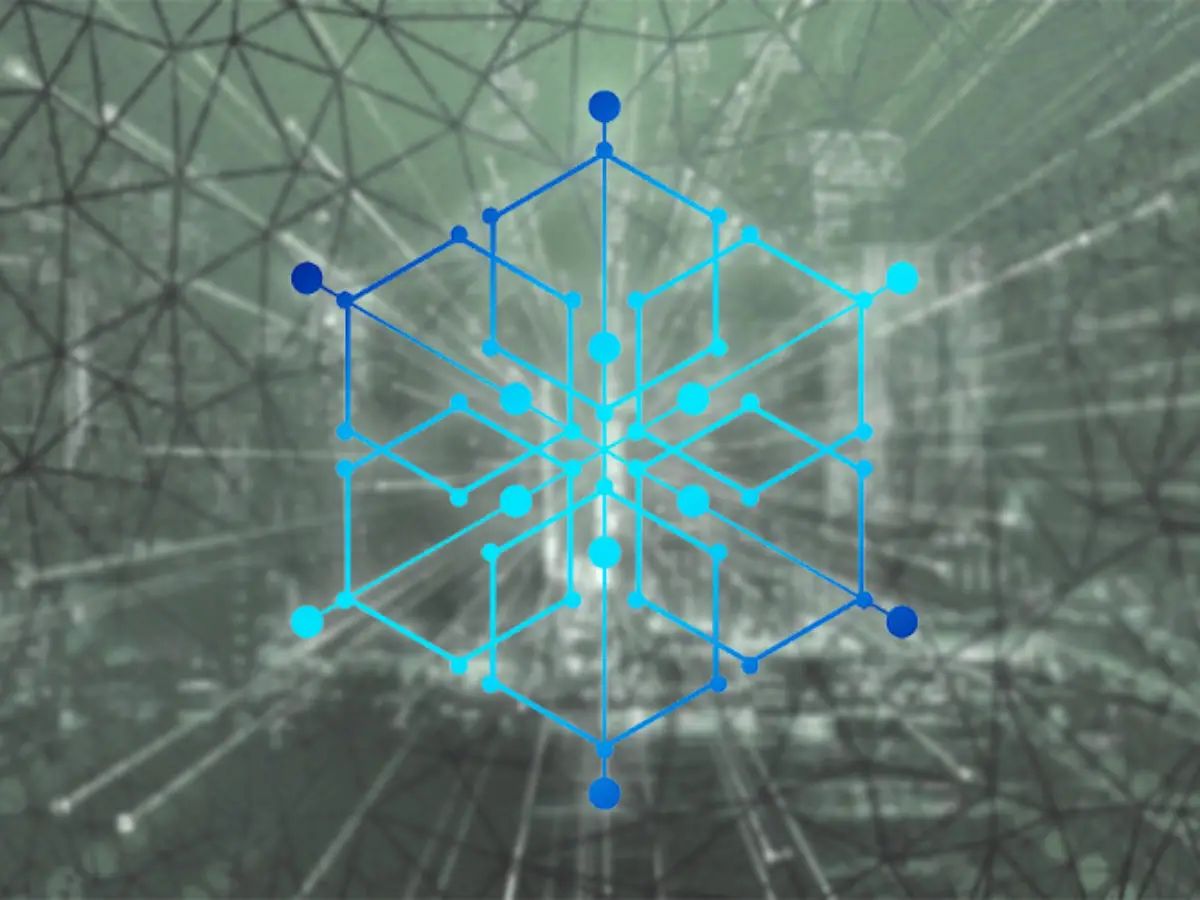Introduction
Welcome to the fascinating world of blockchain! Over the past decade, blockchain technology has emerged as a game-changer, revolutionizing various industries, from finance to supply chain management. But what exactly is blockchain, and how does it work?
Blockchain is a decentralized digital ledger that records and verifies transactions across multiple computers. It was introduced in 2008 by an anonymous person or group of people known as Satoshi Nakamoto as a fundamental component of the cryptocurrency Bitcoin. Since then, blockchain has evolved beyond Bitcoin and found applications in numerous fields.
The beauty of blockchain lies in its distributed nature. Unlike a traditional centralized database, where a single entity controls the data, blockchain operates on a network of computers, or nodes, that work together to maintain the ledger. Each node has a copy of the blockchain, ensuring transparency, immutability, and security.
The concept of blockchain revolves around the idea of chaining blocks of data together in a chronological order. Each block contains a set of transactions, along with a unique identifier called a hash. The hash of each block is generated using a cryptographic hash function, which ensures the integrity and immutability of the data.
One of the key features of blockchain is its ability to achieve consensus among the participating nodes. Consensus mechanisms, such as Proof of Work (PoW) or Proof of Stake (PoS), determine how new blocks are added to the chain and ensure that all nodes are in agreement.
Blockchain technology has several distinct components, including blocks, transactions, hash functions, and public-private key cryptography. These components work together to create a secure and transparent ecosystem where transactions can take place without the need for intermediaries or central authorities.
In the following sections, we will delve deeper into the inner workings of blockchain, exploring its components and shedding light on what the blockchain actually looks like. We will also examine the benefits and potential use cases of this groundbreaking technology. So, let’s embark on this enlightening journey into the world of blockchain!
What is Blockchain?
At its core, blockchain is a distributed ledger technology that enables the secure recording and verification of transactions across multiple computers or nodes. It serves as the foundation for various applications, including cryptocurrencies, smart contracts, and supply chain management systems.
Unlike traditional databases, where a central authority controls and maintains the data, blockchain operates on a decentralized network. This means that no single entity has complete control over the ledger, making it more transparent, immutable, and resistant to tampering or censorship.
Blockchain is often described as a digital ledger because it stores information in a series of blocks that are linked together. Each block contains a collection of transactions, such as the transfer of digital assets or the execution of smart contracts. These transactions are bundled together and added to the blockchain in a sequential and permanent manner.
The integrity of the blockchain is maintained through the use of cryptographic hash functions. A hash function takes an input, such as a set of transactions, and produces a unique string of characters called a hash. Even a small change in the input will result in a completely different hash. This property ensures that any alteration to a block’s content will be immediately detectable.
To further enhance security, blockchain incorporates public-private key cryptography. Each participant in the network has a pair of keys: a public key and a private key. The public key is used to generate a digital signature, which verifies the authenticity of a transaction. The private key, on the other hand, is kept secret and is used to decode the digital signatures.
One of the defining features of blockchain is its consensus mechanism. Consensus ensures that all the nodes in the network agree on the validity and order of transactions. Popular consensus mechanisms include Proof of Work (PoW) and Proof of Stake (PoS), which employ different algorithms to validate transactions and create new blocks.
Blockchain technology offers several advantages over traditional systems. It eliminates the need for intermediaries, reduces costs, accelerates transaction settlement, and enhances security. Moreover, the transparent nature of blockchain allows stakeholders to track and verify transactions in real-time.
In essence, blockchain is a groundbreaking technology that empowers individuals and organizations to transact and interact in a secure, transparent, and efficient manner. With its potential to revolutionize various industries, blockchain is poised to shape the future of finance, supply chain management, healthcare, and beyond.
How does Blockchain work?
Blockchain technology operates on a network of computers, or nodes, that work together to maintain a distributed ledger. To understand how blockchain works, let’s follow the journey of a transaction:
1. Transaction Initiation: A user initiates a transaction by creating a digital record that contains the necessary details, such as the sender’s and recipient’s addresses, the amount, and any additional data associated with the transaction.
2. Verification and Broadcasting: The transaction is broadcasted to the network of nodes. Each node independently verifies the validity of the transaction using predefined rules and criteria. If the transaction meets all the requirements, it is added to a pool of pending transactions.
3. Block Creation: Nodes compete to solve a complex mathematical puzzle, known as mining, to create a new block. Miners use their computational power to find a value, known as a nonce, that, when combined with the transaction data and previous block’s hash, produces a hash that meets the predefined criteria. The first miner to solve the puzzle announces the new block to the network.
4. Block Validation and Addition: Upon receiving the newly mined block, other nodes validate the block by checking the correctness of the solution and ensuring that the transactions contained within the block are legitimate. If a majority of the nodes agree that the block is valid, it is added to the existing blockchain.
5. Chain Extension: As new blocks are added to the blockchain, the network reaches a consensus on the valid chain with the most accumulated work. Nodes continuously update their copy of the blockchain to reflect the latest transactions and blocks.
6. Confirmation and Finality: Once a transaction is included in a block and added to the blockchain, it becomes confirmations. The more confirmations a transaction has, the more secure and irreversible it becomes. Blockchain’s immutability ensures that once a transaction is recorded, it cannot be altered or deleted.
7. Network Maintenance: Nodes in the network continuously communicate with each other to stay synchronized and ensure the integrity of the blockchain. In the case of malicious nodes or attacks, the consensus mechanism provides a mechanism to protect the network from such threats.
By utilizing cryptographic techniques, consensus mechanisms, and a decentralized network, blockchain technology creates a robust and tamper-proof system for recording and verifying transactions. It eliminates the need for a central authority and enables peer-to-peer transactions on a global scale.
Through its transparent and secure nature, blockchain technology has the potential to transform various industries, including finance, supply chain, healthcare, and more. It provides a decentralized infrastructure with enhanced trust, efficiency, and accountability, opening up new possibilities for innovation and collaboration.
Components of Blockchain
Blockchain technology comprises several key components that work together to create a secure and decentralized system. Understanding these components is essential to grasp the inner workings of blockchain. Let’s explore them:
Blocks: Blocks are the building blocks of the blockchain. Each block contains a list of transactions and a unique identifier called a hash, which is generated using cryptographic hash functions. The hash of each block is also used to link it to the previous block, creating a chain of blocks.
Transactions: Transactions represent the actions or operations being recorded on the blockchain. They can involve the transfer of digital assets, the execution of smart contracts, or any other activity that requires recording and verification. Each transaction contains relevant details, such as sender and recipient addresses, timestamps, and transaction amounts.
Hash Functions: Hash functions play a vital role in maintaining the integrity of the blockchain. They generate a unique hash value based on the input data, such as a transaction or a block. Any change in the input data will produce a different hash, making it easy to detect tampering or alteration. Hash functions ensure that the blockchain remains immutable and resistant to fraud.
Public and Private Keys: Public-private key cryptography is used in blockchain technology to provide secure and authenticated transactions. Each participant in the network has a pair of keys: a public key and a private key. The public key is openly shared and used for encryption, while the private key is kept secret and used for decryption. This encryption ensures the confidentiality and authenticity of transactions.
Consensus Mechanism: Consensus mechanisms are protocols that allow the network of nodes to agree on the validity of transactions and the order in which they are added to the blockchain. Popular consensus mechanisms include Proof of Work (PoW) and Proof of Stake (PoS). These mechanisms ensure that the network remains secure, decentralized, and resilient to malicious attacks.
Peer-to-Peer Network: A peer-to-peer (P2P) network is the underlying infrastructure that enables communication and coordination among the nodes in the blockchain network. In a P2P network, each node has equal rights and responsibilities, eliminating the need for a central authority. P2P networks ensure that blockchain is decentralized, transparent, and resistant to single points of failure.
By combining these components, blockchain technology creates a robust and secure system for recording and verifying transactions. The use of cryptographic techniques, consensus algorithms, and a decentralized network ensures transparency, immutability, and trust within the blockchain ecosystem.
Understanding the components of blockchain is essential for exploring its potential applications and the transformative impact it can have on various industries. From finance to supply chain management, healthcare to voting systems, blockchain technology has the power to revolutionize the way we transact, exchange data, and build trust in the digital world.
Blocks
In the world of blockchain, a block is a fundamental component that serves as a building block for the entire system. A block contains a collection of transactions and additional information, and forms the sequential chain that makes up the blockchain itself.
Each block in the blockchain is identified by a unique hash value, which is generated using a cryptographic hash function. This hash acts as a digital fingerprint for the block, allowing for easy identification and verification.
One crucial feature of blocks is that they are linked together in a specific order, forming a chain. This chaining mechanism ensures that the blocks are in chronological order, creating a transparent and immutable record of transactions.
When a new block is created, it contains a reference to the hash of the previous block. This link forms the basis for the chain, ensuring that any modification to a previous block will be immediately detected because it would necessitate recalculating the hash of that block and all subsequent blocks.
Additionally, each block contains a set of transactions. These transactions represent the various activities occurring on the blockchain, such as the transfer of assets between participants, the execution of smart contracts, or any other recorded actions. The transactions are bundled together in a block to streamline their processing and inclusion in the blockchain.
One key benefit of organizing transactions into blocks is the ability to validate and verify multiple transactions simultaneously. By grouping transactions together, the blockchain becomes a more efficient and scalable system, allowing for a higher volume of transactions to be processed and added to the ledger.
Furthermore, the size of each block is limited to prevent inefficiencies in the network. This limitation ensures that blocks can be propagated and validated by the nodes in a timely manner, promoting the overall speed and efficiency of the blockchain.
Blocks are integral to the security and integrity of the blockchain. The use of cryptographic hash functions and the chaining mechanism ensures that any tampering or modification to a block will disrupt the entire chain, making it practically impossible to alter or manipulate the blockchain’s history without detection.
Overall, blocks serve as the building blocks of the blockchain. They contain the transactions, are linked together in a specific order, and provide a critical layer of security and immutability. By organizing and validating transactions into blocks, the blockchain becomes a powerful and transparent system for recording and verifying digital transactions in a decentralized manner.
Transactions
Transactions are the core components of any blockchain system. They represent the actions or operations being recorded on the blockchain, such as the transfer of digital assets, execution of smart contracts, or any other recorded activity involving the exchange or modification of data.
When a transaction occurs, it is first created by the participant initiating the action. This participant, known as the sender, specifies the required details, including the recipient’s address, the amount or value being transferred, and any additional data associated with the transaction.
Once the transaction is created, it undergoes a process of verification and validation. This verification is performed by nodes in the blockchain network, who independently check the validity of the transaction based on predefined rules and criteria. These rules can include checking the sender’s account balance, verifying signatures, and ensuring that the required funds are available.
Once a transaction is deemed valid, it is added to a pool of pending transactions, waiting to be included in a block. The inclusion of transactions in a block is typically determined by the consensus mechanism being used by the blockchain network.
When a new block is created, it includes a set of transactions from the pending pool. The transactions are bundled together into the block, creating a chronological record of actions. This bundling allows for efficient processing and inclusion of multiple transactions in a single block.
After the block is created and added to the blockchain, the included transactions become a part of the permanent ledger. The immutability and security of the blockchain ensure that once a transaction is recorded, it cannot be modified or deleted without consensus from the network.
Transactions within the blockchain are also associated with cryptographic mechanisms, such as digital signatures. Participants in the network have a pair of keys: a private key and a public key. The private key is used to create a digital signature, which verifies the authenticity and integrity of the transaction. The public key is shared openly, allowing other participants to verify the signature and confirm the sender’s identity.
Additionally, each transaction is timestamped, providing a record of when the transaction occurred. This timestamp serves as an important piece of information for tracking and auditing purposes, as it helps establish the chronological order of transactions on the blockchain.
Transactions are the lifeblood of the blockchain, enabling value transfer, contract execution, and other interactions within the network. By providing a secure, transparent, and efficient means of recording and validating transactions, blockchain technology has the potential to transform various industries, including finance, supply chain management, and more.
Hash Functions
Hash functions play a critical role in maintaining the integrity and security of blockchain technology. A hash function is a mathematical algorithm that takes an input, such as a block of data or a transaction, and produces a fixed-size output, known as a hash value or digest.
One of the primary characteristics of hash functions is their ability to provide a unique output for each specific input. Even a slight change in the input data will result in a completely different hash value. This property is known as the avalanche effect and ensures that any alteration or tampering of the original data will be immediately detectable.
The generated hash value acts as a digital fingerprint of the original data. It is typically represented as a sequence of alphanumeric characters. Hash values are irreversible, meaning it is virtually impossible to reverse-engineer the original input data from the hash value.
Within the context of blockchain, hash functions are primarily used for two purposes: ensuring the integrity of data and linking blocks together.
Hash functions are employed to verify the integrity of data stored within a block. When a block is created, the hash function processes the entire content of the block, including the transactions, nonce, and previous block’s hash. The resulting hash value is stored within the block as its unique identifier.
Any modification to the block’s content, no matter how minor, will produce a different hash value. In this way, the hash function acts as a verification mechanism, as it allows the network to easily detect if any data within a block has been tampered with.
Hash functions also facilitate the chaining mechanism of blockchain. Each block in the chain stores the hash of the previous block, creating a link between them. The hash of a block serves as a reference and ensures that any modification to a previous block will be immediately detectable. This chaining mechanism forms the backbone of the blockchain’s transparency, immutability, and security.
There are several commonly used hash functions in blockchain technology, such as SHA-256 (Secure Hash Algorithm 256-bit) and Keccak-256. These algorithms are designed to be fast, secure, and resistant to collisions (when two different inputs produce the same hash value).
Overall, hash functions are an essential component of blockchain technology. They provide data integrity, ensure immutability, and enable the secure linking of blocks in the blockchain. By utilizing these cryptographic tools, blockchain systems can achieve a transparent and tamper-proof infrastructure for recording and verifying transactions.
Public and Private Keys
Public and private key cryptography is a fundamental component of blockchain technology. It provides a secure and authenticated way for participants to interact and transact within the blockchain network.
In this cryptographic system, each participant in the network possesses a pair of keys: a public key and a private key. The public key is openly shared with others, while the private key is kept secret and known only to the owner.
Public keys are used for encryption and are associated with a specific user or entity. They serve as the address or identifier within the blockchain network. When a participant wants to receive a transaction or message, they provide their public key to the sender.
Private keys, on the other hand, are used for decryption and are known only to the owner. They ensure the confidentiality and security of the transactions conducted by the participant. The private key allows the owner to unlock and access the messages or transactions encrypted with their corresponding public key.
When a user wants to send a transaction on the blockchain, they use the recipient’s public key to encrypt the transaction data. Once encrypted, the transaction can only be decrypted and read by the recipient, who possesses the corresponding private key.
Furthermore, public and private keys are used to create digital signatures, which verify the authenticity and integrity of transactions. To sign a transaction, the sender uses their private key to generate a unique digital signature. The digital signature is then attached to the transaction, providing a cryptographic proof that the transaction originated from the rightful owner of the private key.
Participants in the blockchain network can verify the authenticity of a transaction by using the sender’s public key and the provided digital signature. By decrypting the digital signature with the public key, others can confirm that the transaction has not been tampered with and that it was indeed signed by the private key associated with the public key.
Public and private key cryptography ensures secure and trust-worthy interactions within the blockchain network. It allows participants to transact without the need for a central authority to verify or validate their transactions. This decentralized approach increases security, privacy, and independence of the participants.
As blockchain continues to evolve and find applications in various industries, public and private key cryptography will remain a crucial element in ensuring the security, integrity, and confidentiality of transactions within the decentralized network.
Consensus Mechanism
Consensus is a fundamental aspect of blockchain technology that ensures all participants in the network agree on the validity and order of transactions. Consensus mechanisms play a crucial role in achieving decentralized decision-making, maintaining the integrity of the blockchain, and preventing malicious actors from exploiting the system.
Consensus mechanisms determine how new blocks are added to the blockchain and how conflicts or disagreements among participants are resolved. Different consensus mechanisms employ various algorithms and rules to achieve consensus in a secure and efficient manner.
One commonly known consensus mechanism is Proof of Work (PoW), which is used by Bitcoin and some other cryptocurrencies. PoW involves miners competing to solve complex mathematical puzzles using computational power. The first miner to solve the puzzle presents the solution to the network, and if the solution is verified by other participants, the miner is rewarded with new cryptocurrency and the block they mined is added to the blockchain.
Another consensus mechanism is Proof of Stake (PoS), which is designed to address the environmental and energy concerns of PoW. In PoS, participants with a certain amount of cryptocurrency, known as a stake, are chosen to validate and create new blocks based on their stake. The probability of being chosen as a validator is proportional to the stake held. Participants are incentivized to validate honestly, as their stake can be lost if they act maliciously.
Other consensus mechanisms, such as Delegated Proof of Stake (DPoS), Practical Byzantine Fault Tolerance (PBFT), and Raft, offer different approaches to achieving consensus. Each mechanism has its own set of rules and processes for validating transactions and adding new blocks to the blockchain.
The choice of consensus mechanism depends on the specific requirements and goals of the blockchain network. Factors such as scalability, energy efficiency, security, and decentralization are considered when determining the most suitable mechanism.
Consensus mechanisms are designed to address the possible presence of malicious participants or nodes in the network. They ensure that the majority of participants in the network agree on the validity of transactions and prevent any single entity from gaining control or manipulating the blockchain.
By achieving consensus, blockchain networks can establish trust and reliability without relying on a central authority or intermediary. Consensus mechanisms enable decentralized decision-making, where participants collectively determine the fate of the blockchain, ensuring its security, availability, and immutability.
As blockchain technology continues to evolve, new consensus mechanisms are being explored and developed to address various challenges and requirements. Understanding the different consensus mechanisms is crucial in comprehending the operation and trustworthiness of blockchain networks.
Peer-to-Peer Network
In blockchain technology, a peer-to-peer (P2P) network plays a crucial role in enabling decentralized communication, coordination, and consensus among participants. P2P networks facilitate direct interactions between peers, eliminating the need for a central authority or intermediary.
Unlike traditional client-server architectures, where a central server controls the flow of information, P2P networks distribute the control and responsibility among the network participants. Each node in the network is equal and has the same rights and duties, allowing for a more democratic and decentralized system.
Nodes in a P2P network communicate directly with each other, exchanging information, transactions, and blocks. This direct communication ensures the transparency and real-time availability of information throughout the network.
One of the key advantages of a P2P network is its resilience to failure. In a centralized system, if the central server goes down, the entire system becomes inaccessible. However, in a P2P network, if one node becomes unavailable, the network remains functional as other nodes continue to communicate with each other.
P2P networks are designed to be self-organizing and self-healing. If a new node joins the network, it can automatically discover and establish connections with other nodes. Nodes can join or leave the network at any time without disrupting the overall functioning of the blockchain system.
The decentralized nature of P2P networks also enhances the security and privacy of transactions. With no central point of failure, attackers would need to compromise a significant portion of the network to carry out a successful attack, making it highly resilient and secure.
P2P networks also promote efficiency in blockchain systems. Since transactions and information are shared directly between nodes, there is no need for intermediaries or central authorities to validate and authorize transactions. This reduces transaction costs, streamlines processes, and allows for faster and more efficient interactions.
The decentralized aspect of P2P networks aligns with the principles of blockchain, where power and decision-making are distributed among the participants. P2P networks enable the blockchain to operate without reliance on a central authority, fostering trust, transparency, and consensus among the network participants.
As blockchain technology advances, P2P networks continue to evolve, introducing new features and improvements to enhance efficiency, scalability, and security. P2P networks underpin the decentralized nature of blockchain, empowering individuals and organizations to participate in a democratized system that fosters trust and cooperation.
What does the Blockchain look like?
Visually, the blockchain can be imagined as a transparent and continuously growing chain of blocks, with each block containing a collection of transactions. The blockchain is often represented in a linear format, illustrating the sequential arrangement of blocks.
Each block in the blockchain is identified by a unique hash value, generated using a cryptographic hash function. This hash value acts as a digital fingerprint for the block and is used to link it to the previous block, forming a chain of blocks.
The interconnectedness of the blocks creates a distributed ledger, which is shared and maintained by multiple nodes in the network. These nodes work together to validate transactions, create new blocks, and ensure the integrity and security of the blockchain.
However, it’s important to note that the blockchain is not restricted to a single linear chain. There are various types of blockchain structures, including both linear chains and more complex hierarchical structures, such as tree-like or graph-based structures.
Decentralization is a key characteristic of the blockchain, and it is reflected in the network architecture. In a decentralized blockchain, the network consists of multiple nodes, each independently maintaining a copy of the entire blockchain. This redundancy ensures the availability and consistency of the blockchain, even if some nodes become temporarily unavailable or malicious.
Furthermore, the blockchain is not owned or controlled by any single entity. It is a public ledger that can be accessed and verified by anyone with an internet connection. The transparency of the blockchain allows stakeholders to track and verify transactions in real-time, promoting trust and accountability.
Blockchain technology provides an immutable record of transactions and data. Once a transaction is recorded and confirmed by the network, it becomes permanent and cannot be altered without the consensus of the majority of nodes. This immutability enhances the security and integrity of the blockchain, making it tamper-proof and resistant to fraud.
The blockchain’s appearance and structure may vary depending on the specific blockchain implementation, whether it is a public blockchain like Bitcoin or a permissioned blockchain used within a specific consortium or organization. Nevertheless, the essence of the blockchain remains consistent – a decentralized, transparent, and secure ledger that enables trust and accountability in a digital world.
Decentralization
Decentralization is a core principle of blockchain technology that ensures power, control, and decision-making are distributed among a network of participants, rather than being centralized in the hands of a single authority or entity.
In a decentralized blockchain network, there is no central point of control or single point of failure. Instead, the network consists of multiple nodes, each maintaining a copy of the entire blockchain and participating in the validation and verification of transactions.
This decentralized structure brings several significant advantages to blockchain technology. First and foremost, decentralization promotes transparency and trust. With no central authority, participants can directly interact and transact with each other, without the need for intermediaries or third parties. This eliminates the need to place trust in a single entity and increases the transparency of transactions and data on the blockchain.
Decentralization also enhances security and resilience. Traditional centralized systems are vulnerable to attacks or failures at the central server. In a decentralized blockchain, an attack on one node or even a group of nodes does not disrupt the entire network, as other nodes continue to function and maintain the integrity of the blockchain. This redundancy provides greater security and resilience against malicious activities and system failures.
Moreover, decentralization prevents a single entity from monopolizing control over the network. Decision-making power is distributed among participants, and changes to the blockchain protocol or network rules require the consensus and agreement of a significant portion of nodes. This ensures a more democratic and inclusive system.
Decentralization also facilitates censorship resistance. In centralized systems, authorities could potentially censor or control certain transactions or activities. However, in a decentralized blockchain, there is no central entity with the power to dictate or manipulate transactions, making it difficult to censor or control the flow of information and transactions.
Blockchain decentralization is not limited to public blockchains. Even in private or permissioned blockchain networks, decentralization can be achieved by distributing control and decision-making authority across multiple trusted entities within a consortium or organization.
While decentralization brings numerous benefits to blockchain technology, it also poses challenges. Decentralized networks can be slower and require more resources for consensus and validation compared to centralized systems. However, technological advancements and innovative consensus mechanisms are addressing these challenges, making decentralized blockchain networks more scalable and efficient.
Overall, decentralization is a fundamental pillar of blockchain technology, promoting transparency, trust, security, and censorship resistance. By distributing power and control among participants, blockchain provides an inclusive and resilient infrastructure for creating decentralized applications and transforming traditional industries.
Distributed Ledger
A distributed ledger is at the heart of blockchain technology. It refers to a database or record-keeping system that is shared and maintained across multiple nodes or computers in a network. Unlike traditional centralized ledgers, where a single authority controls and updates the database, a distributed ledger is decentralized and relies on consensus among the network participants to validate and verify transactions.
In a blockchain network, each participant maintains a complete copy of the ledger, which contains a history of all transactions that have been recorded. This redundancy ensures that the ledger is accessible and available to all participants, even if some nodes experience downtime or disruption.
The distributed nature of the ledger enhances security and resilience. Since there is no single point of failure, a malicious attack on one or a few nodes does not compromise the integrity of the entire ledger. The consensus mechanism ensures that the majority of nodes agree on the validity of transactions, making it difficult for any single entity to manipulate the ledger’s data.
Another key characteristic of distributed ledgers is immutability. Once a transaction is recorded on the ledger and validated by the network, it becomes a permanent and unchangeable part of the blockchain. This feature prevents fraud, tampering, or alteration of the data and creates a reliable and auditable history of transactions.
A distributed ledger provides transparency and accountability. With each participant having access to the same ledger, there is increased visibility into transaction details and data. It becomes easier to track and verify transactions, ensuring trust and integrity within the network.
Furthermore, distributed ledgers foster trust among participants by eliminating the need for intermediaries or trusted third parties. Transactions can be directly validated and verified by the network, reducing reliance on centralized authorities and increasing efficiency in processes.
While most commonly associated with blockchain technology, distributed ledgers can also be utilized in other contexts, such as supply chain management, healthcare records, and voting systems. In these scenarios, the ledger is maintained by a consortium or group of trusted entities that share and validate data in a distributed manner.
Advancements in technology have made distributed ledgers more scalable and efficient. Different consensus mechanisms, such as Proof of Work (PoW), Proof of Stake (PoS), or Byzantine Fault Tolerance (BFT), contribute to achieving consensus among network participants while addressing scalability and performance concerns.
In summary, a distributed ledger is a fundamental component of blockchain technology. It allows for the decentralized recording, validation, and verification of transactions while providing transparency, security, and immutability. By distributing control and data across a network of participants, distributed ledgers revolutionize traditional database systems and enable innovative applications in various industries.
Immutability
Immutability is a fundamental characteristic of blockchain technology that ensures once a transaction or data is recorded on the blockchain, it cannot be altered, tampered with, or deleted without consensus from the network participants. Immutability provides a high level of trust and integrity, making blockchain an ideal solution for applications that require a secure and transparent record-keeping system.
Through the use of cryptographic hash functions and the chaining mechanism of blocks, blockchain technology achieves immutability. Each block contains a unique hash value that serves as a digital fingerprint of its content, including the transactions recorded within it. The hash of each block is linked to the hash of the previous block, creating an unbroken chain of blocks.
If any data within a block is altered, the resulting hash value will be completely different. This change in the hash immediately alerts the network participants to the tampering attempt. Additionally, because each block’s hash is used to calculate the following block’s hash, any alteration in a previous block would require recalculating the hash of every subsequent block, making it practically impossible to modify the blockchain’s history unnoticed.
Immutability brings several important benefits to blockchain technology. Firstly, it enhances the security and integrity of data stored on the blockchain. The irreversible nature of the blockchain’s data ensures that transactions are permanent and resistant to manipulation or fraud.
Secondly, immutability increases accountability and transparency. Once a transaction is recorded on the blockchain, it becomes part of a publicly accessible and verifiable ledger. The immutability of the blockchain ensures that historical records can be traced back and verified, providing a reliable and auditable system.
Immutability is crucial for sensitive applications, such as financial services and supply chain management, as it prevents unauthorized changes or falsification of data. It enables stakeholders to confidently rely on the accuracy and validity of the recorded information.
While immutability is a vital characteristic of blockchain, it also presents challenges. In cases of genuine errors or incorrect data, rectifying mistakes can be challenging due to the immutability of the blockchain. Solutions such as adding a new transaction to reverse the incorrect information or implementing off-chain processes to handle amendments are being explored to address these challenges.
Overall, immutability is a key feature of blockchain technology, ensuring the permanence and integrity of data recorded on the blockchain. It establishes trust and reliability in a decentralized manner, making blockchain an attractive solution for applications that require secure and immutable records.
Security
Security is a critical aspect of blockchain technology, ensuring the protection of data, transactions, and the overall integrity of the system. Blockchain employs several mechanisms to enhance security and mitigate potential risks, making it a highly secure infrastructure for various applications.
One of the key security features of blockchain is the use of cryptographic techniques. Transactions and data on the blockchain are encrypted using public-key cryptography, where participants have a pair of public and private keys. This encryption ensures confidentiality and authenticity, preventing unauthorized access and ensuring that only the intended recipient can decrypt and access the information.
Additionally, cryptographic hash functions are used to generate unique hash values for each block in the chain. Any modification to the data within a block would result in a different hash value, immediately signaling tampering or tampering attempt. This property ensures data integrity and protects against malicious alterations.
The distributed nature of blockchain also contributes to its security. Rather than relying on a central authority or server, blockchain operates on a decentralized network of nodes. Each node in the network maintains a copy of the blockchain, which makes it much more difficult for attackers to manipulate or compromise the system. The redundancy in the network ensures high availability and reliability, reducing the risk of a single point of failure.
Consensus mechanisms, such as Proof of Work (PoW) or Proof of Stake (PoS), play a vital role in maintaining security. They prevent malicious actors from gaining control over the blockchain by requiring participants to prove their ownership or stake in the network. Consensus mechanisms also protect against double-spending and other fraudulent activities by ensuring that transactions are validated and agreed upon by a majority of nodes before being added to the blockchain.
The immutability of the blockchain provides an additional layer of security. Once a transaction is recorded, it becomes permanent and cannot be altered without consensus from the network. This tamper-proof nature of the blockchain makes it highly resistant to fraud and manipulation, increasing trust and confidence in the system.
While blockchain technology offers robust security, it is essential to consider potential vulnerabilities. External factors, such as attacks targeting individual nodes, 51% attacks (when a single entity controls a majority of the network’s mining power), or vulnerabilities in the consensus mechanism, can pose challenges to blockchain security. Continuous research, rigorous testing, and the adoption of best security practices are crucial for mitigating these risks.
In summary, blockchain technology provides a secure infrastructure for various applications. The use of cryptographic techniques, decentralization, consensus mechanisms, and immutability ensures confidentiality, integrity, availability, and resistance to fraud. By leveraging these security measures, blockchain demonstrates significant potential to transform industries where security and trust are paramount.
Transparency
Transparency is a foundational characteristic of blockchain technology, enabling a higher level of openness, accountability, and trust in the digital world. Blockchain achieves transparency by providing a decentralized and publicly accessible ledger that records and verifies transactions in a transparent manner.
One of the primary ways blockchain achieves transparency is through its distributed nature. In a decentralized blockchain network, all participants have access to a copy of the entire ledger, which includes a record of all transactions that have taken place. This shared visibility ensures that all participants can independently verify the accuracy and integrity of the recorded data.
The transparent nature of blockchain improves trust by allowing participants to validate transactions in real-time. Each transaction on the blockchain is timestamped and contains details such as sender and recipient addresses, transaction amounts, and additional data. This transparency enables stakeholders to track transactions, view the history of asset ownership, and ensure the authenticity of the recorded information.
Blockchain transparency is particularly beneficial in sectors where trust and credibility are crucial, such as finance, supply chain management, and elections. In financial transactions, blockchain transparency allows for easy auditing and verification of transactions, reducing the need for time-consuming and costly manual processes.
In supply chain management, blockchain enables the tracking of goods from their origin to the final destination, ensuring transparency and visibility throughout the entire supply chain. This transparency helps prevent fraud, counterfeiting, and other unethical practices by providing a verifiable and immutable record of each step in the supply chain.
In democratic processes, such as elections, blockchain can be used to ensure transparency and tamper-proof voting records. Through blockchain, each vote can be securely recorded and verified, enabling voters and observers to ensure the integrity of the election process and building trust in the system.
However, it is important to note that while blockchain provides transparency at the transactional level, it also respects the privacy and confidentiality of individuals involved. While transaction details are visible, the actual identities of participants can be kept anonymous or pseudonymous, depending on the design of the blockchain system.
Blockchain transparency can also have limitations. Not all blockchains are fully transparent, as there are situations where privacy concerns may require restricting access to certain transaction details or encrypting specific information. Private or permissioned blockchains, for example, may limit access to a select group of participants based on defined permissions or access control mechanisms. These limitations are essential to balance the need for transparency with individual privacy rights.
In summary, transparency is a crucial feature of blockchain technology that promotes openness, accountability, and trust. By providing a publicly accessible and verifiable record of transactions, blockchain ensures transparency while offering the potential for privacy and confidentiality. The transparency of blockchain has the power to transform industries by facilitating trust, promoting efficiency, and improving auditability in a wide range of applications.
Use Cases
Blockchain technology has shown great potential for transforming various industries and sectors. Its unique features, such as decentralization, transparency, and security, make it suitable for a wide range of use cases. Here are some notable examples:
Financial Services: Blockchain has significant implications for financial services, including payments, remittances, and cross-border transactions. By eliminating the need for intermediaries and streamlining processes, blockchain enables faster, more secure, and cost-effective transactions. It also facilitates the creation of decentralized financial applications (DeFi) that provide services such as lending, borrowing, and decentralized exchanges.
Supply Chain Management: Blockchain can revolutionize supply chain management by offering end-to-end visibility and transparency. It enables tracking and verification of products throughout the supply chain, reducing counterfeiting, enhancing quality control, and ensuring ethical sourcing. Blockchain enhances trust among stakeholders and allows for more efficient and secure coordination among suppliers, manufacturers, distributors, and consumers.
Healthcare: In the healthcare industry, blockchain can enhance patient data management, interoperability, and security. It enables secure sharing of medical records while maintaining patient privacy. Blockchain can also assist in the management of pharmaceutical supply chains, preventing counterfeit drugs from entering the market and ensuring the authenticity of medications.
Identity Management: Blockchain can provide a secure and decentralized system for managing digital identities. It offers individuals control over their personal information and reduces the risk of identity theft or fraud. Blockchain-based identity systems can be useful in areas such as digital voting systems, access control, and KYC (Know Your Customer) processes.
Real Estate: Blockchain has the potential to simplify and streamline real estate transactions, from property listings to title transfers. Blockchain-based platforms can provide transparent and tamper-proof records of property ownership, reducing the need for intermediaries and the risk of fraud. Smart contracts on the blockchain also enable automated and secure execution of real estate agreements.
Energy and Sustainability: Blockchain can facilitate the transition to a more sustainable energy system. It enables the tracking and trading of renewable energy certificates, peer-to-peer energy trading, and transparent carbon credit trading. Blockchain-powered platforms can incentivize and reward individuals or organizations for adopting sustainable practices and reducing carbon emissions.
Government and Public Services: Governments can leverage blockchain for various applications, such as secure and transparent voting systems, public procurement, and land registry. Blockchain can enhance efficiency, reduce corruption, and increase trust in government processes.
These use cases are just a glimpse of the potential of blockchain technology. As the technology continues to evolve, new applications and innovative solutions will emerge, transforming industries and driving positive change across the globe.
Conclusion
Blockchain technology has emerged as a groundbreaking innovation with the potential to revolutionize various industries and sectors. Its unique characteristics, including decentralization, transparency, security, and immutability, offer numerous advantages over traditional centralized systems.
Through blockchain, trust in transactions can be established without the need for intermediaries or central authorities. Decentralization allows for peer-to-peer interactions, ensuring transparency and reducing the risk of single points of failure or manipulation.
The transparent and secure nature of blockchain enables efficient and auditable transactions, providing a reliable and tamper-proof record of data and activities. The use of cryptographic techniques enhances privacy, confidentiality, and authenticity, ensuring secure interactions within the network.
Blockchain technology has already demonstrated its potential in various use cases, including finance, supply chain management, healthcare, identity management, real estate, energy, and government services. These applications showcase the immense possibilities offered by blockchain to increase efficiency, accessibility, and trust in various sectors.
However, it is important to recognize that blockchain technology is still evolving, and challenges remain. Scalability, energy consumption, regulatory frameworks, and interoperability are some of the areas that require ongoing research and development.
Despite these challenges, blockchain technology holds great promise and has the potential to transform the way we transact, communicate, and interact in the digital age. Its decentralized and transparent nature fosters trust, removes intermediaries, reduces costs, and opens up new opportunities for innovation and collaboration.
As blockchain technology progresses and matures, the full extent of its impact will become more apparent. Continued exploration and adoption of blockchain in diverse sectors will play a vital role in unlocking its immense potential and shaping a more decentralized, transparent, and secure future.

























